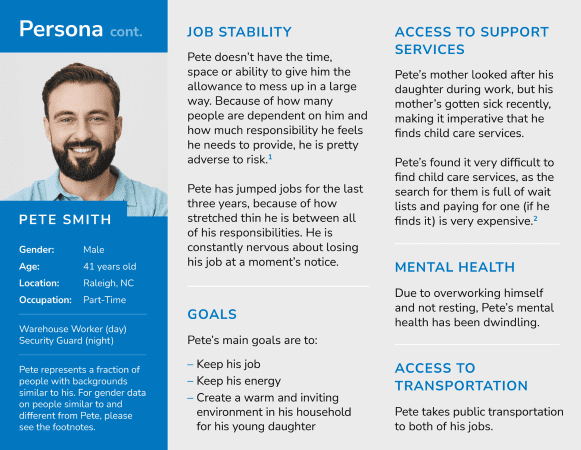Inclusive user personas are essential in shaping effective user research and enhancing overall user experience across digital platforms. By focusing on the diverse needs of users, these personas enable designers to ensure accessibility and relevance for everyone, particularly those who may be marginalized in traditional research frameworks. Incorporating principles from design thinking and participatory design, inclusive user personas prioritize the unique perspectives of all users, including those who use assistive technology. This approach not only expands the scope of user research but also challenges preconceived notions of usability. Ultimately, inclusive user personas foster a user-centric design philosophy that cultivates empathy and understanding among product teams, thus driving successful outcomes for all users.
When exploring the realm of user engagement, it’s crucial to consider alternative approaches to creating user profiles that fully encapsulate the varying experiences individuals may have. These alternative representations—often referred to as accessibility personas, user archetypes, or empathetic user profiles—focus on understanding the unique challenges faced by users, particularly those utilizing assistive devices and technologies. By adopting a holistic view, designers can effectively implement participatory design strategies to involve users in the creation of meaningful solutions. The goal is not just to obtain insights that inform user experience, but to actively collaborate with individuals, ensuring that their voices shape the final products. This deeper engagement ultimately enriches the design process and results in insights that resonate with a broader audience.

The Importance of Inclusive User Personas
In Eric Bailey’s insightful exploration of inclusive personas in user research, he emphasizes their significance in aligning design processes with users’ actual needs. As someone who’s navigated the world of user personas, I can attest to the wealth of knowledge encapsulated in his post. The essence of user-centric design isn’t merely in representing a broad audience, but in deeply understanding specific individuals who inhabit that audience. This shift from a general understanding towards an appreciation of unique user experiences can drastically enhance the effectiveness of design outcomes.
With a growing focus on inclusivity, the traditional methods of user research seem increasingly outdated. During my own studies, I learned that mere representation of populations may gloss over the nuanced barriers faced by marginalized individuals. Thus, we recognize the need to embrace a design approach informed by individuals’ unique motivations and challenges rather than high-level trends alone.
Redefining Traditional Research Methods
Eric critiques the established paradigms of user research, pointing out a troubling ignorance towards inclusivity in traditional methodologies. Research should transcend stereotype-driven assumptions and instead delve into personal experiences that can inform our understanding of usability for all users. The rigid structures of past approaches often leave significant gaps in knowledge about how diverse individuals interact with design.
The call to action here is clear: we must shift our research practices to prioritize individual narratives, allowing inclusive personas to guide our understanding of user needs genuinely. This redefinition of user research can empower designers to create solutions that are not merely compliant with accessibility guidelines but are also intuitively usable by diverse populations.
Assistive Technology as a Universal Tool
As Eric elegantly states, assistive technology shouldn’t be pigeonholed as solely the realm of individuals with disabilities. It serves a broader purpose, enhancing usability across demographics. This perspective is crucial as it recognizes that everyone—regardless of ability—can benefit from features designed with accessibility in mind.
Moreover, consider how common enhancements in our environments benefit a wide array of individuals. The adaptations we make, such as installing ramps or providing multi-modal communication options, highlight the reality that inclusivity enriches experiences for all users. Therefore, the notion of assistive technology should expand beyond mere accommodation toward universal utility.
Integrating Diverse Perspectives in Research
The core challenge remains in ensuring inclusive research is not an afterthought or a separate body of work devoid of connection to mainstream personas. Eric emphasizes the necessity for disability representation within all user personas, as neglecting this vital component can lead to flawed perceptions of user diversity.
When we document inclusive user research distinctly from general methodologies, we risk creating an artificial divide that diminishes the importance of accessibility. Instead, integrating perspectives from all segments of the community can lead toward richer insights and more effective design solutions.
Understanding Radical Participatory Design
Radical Participatory Design (RPD) invites not just input from community members but empowers them as equal stakeholders in the design process. Eric’s assessment of this participatory model challenges conventional power dynamics within research and design teams and promotes a genuinely collaborative approach.
This methodology transcends a simple interaction framework by flattening hierarchies, fostering an environment where voices traditionally marginalized in design conversations are prioritized. The result is a richer, more diverse set of insights that can profoundly shape user experiences.
Moving Towards Actionable Engagement
Eric’s final recommendations urge us to embrace a mindset that relinquishes control over design narratives, favoring a collaborative approach that resonates with participants’ lived experiences. This tactic represents a paradigm shift in user research, encouraging flexibility and openness.
Member checking, or allowing users to contribute to the analysis of their experiences, can illuminate aspects often overlooked by researchers. By continuously evaluating our methodologies and acknowledging our biases and shortcomings, organizations can foster a culture of inclusion that truly honors all voices.

Conclusion: The Importance of Inclusive Personas in User Research
In reflecting on Eric Bailey’s insights, it becomes increasingly clear that as design professionals, we must extend our understanding beyond traditional user personas to embrace the nuances of inclusive personas. The call to action is not just about collecting data on users but fundamentally reshaping how we view and integrate diverse experiences into our design processes. It’s essential to recognize that by adopting an inclusive lens, we can significantly enhance not only our products but the experiences of a broader audience.
Key points to consider include:
– Traditional user personas often miss critical individual experiences that can inform design.
– An inclusive approach considers the unique barriers faced by individuals, leading to designs that accommodate all users.
– The involvement of diverse individuals in the design process fosters a robust and empathetic understanding of user needs.
Moreover, as we move forward in our design practices, the principles of radical participatory design can serve as a guiding framework. This methodology emphasizes not just the inclusion of targeted user groups in the research and design phases but their empowerment as equal contributors. From this perspective, we can transform the narrative around user experiences, acknowledging the infinite variations within user demographics.
Emphasizing inclusivity in design reminds us:
– That assistive technology serves a broader audience than just those with disabilities.
– Empowering users leads to richer data and more effective designs.
– Inclusivity should not be an afterthought but a fundamental part of the design ethos.















